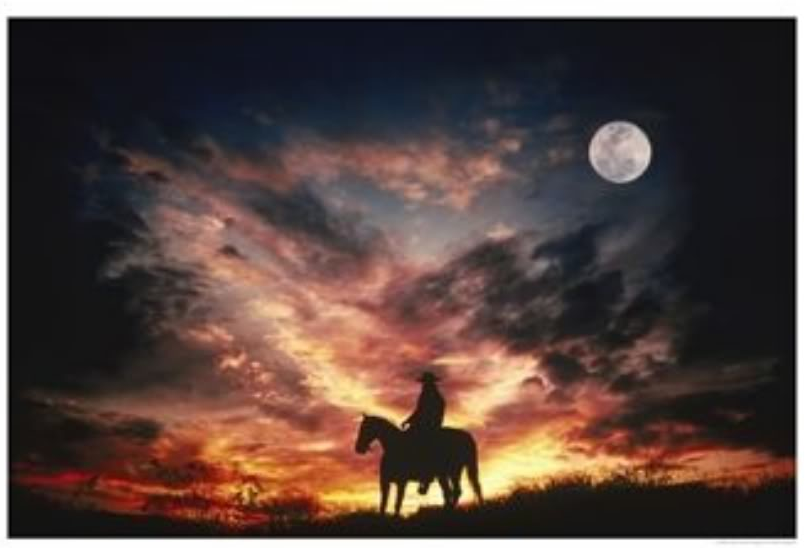Horses have a long history on the Great Plains. There is evidence of early horses (from the genus equus, which includes horses, donkeys, and zebras) in parts of North America from many thousands of years ago. It is not entirely clear what their relationship with humans might have been, but it’s likely that climatic changes forced their extinction around 12,000 years ago. Related species however, continued to survive in Asia and Europe.
Skip ahead to the 1500s, when the horse finally returned to North America (genetically largely unchanged from the earlier species) by way of the Spanish, and then spread once again to various parts of the continent, most notably the Great Plains. Native American tribes such as the Sioux were able to employ them to great adavantage in their culture.
Skip ahead again to the 1800s and the “wild west.” It’s hard to imagine a frontier town filled with its various characters without imagining the street bustling with horses, much less an iconic cowboy without his equally iconic horse. One sees a rugged and rolling landscape containing a lone cowboy on his horse at sunset.
photo from johncowboy.com
Perhaps these are Hollywood images, but it is hard to think of the West without thinking of the horse. They have played such a large role on this vast stage.
The Great Plains Trail will welcome horseback riding, and given the heritage and the history of horses in this region, it seems a natural fit. Anything from day trips to multi-week trips will be possible on such a long distance trail. The possibilities and opportunities will be endless.
The scale of the Great Plains is matched only by the scale of history that played itself out in deep valleys, and high atop windswept mesas. Riding a horse along the Great Plains Trail is an excellent way to imagine what it might have been like 150, 500, or even 15,000 years ago.



2 Responses
Excellent post Steve!!
That is part of the allure of these long-distance trails. In addition to being green, healthy, scenic, & fun, they are also quite historical. Whether it is the Lewis & Clark Trail, the Great Plains Trail, the Underground Railroad trail, a rail-trail, or a canal trail, they are all packed with history. And because they are often trails or lightly used roads, that history seems so much more authentic and meaningful than the single-site museums and historical markers that are more populated & hectic.
Very true. On a trail, you have to opportunity to grasp the history in a more meaningful way. It always feels more tangible when you’re standing under the same sky, seeing the same landscapes, and feeling the same wind. There is a big push with National Historic trails to encourage more hiking and experiential learning for this very reason.